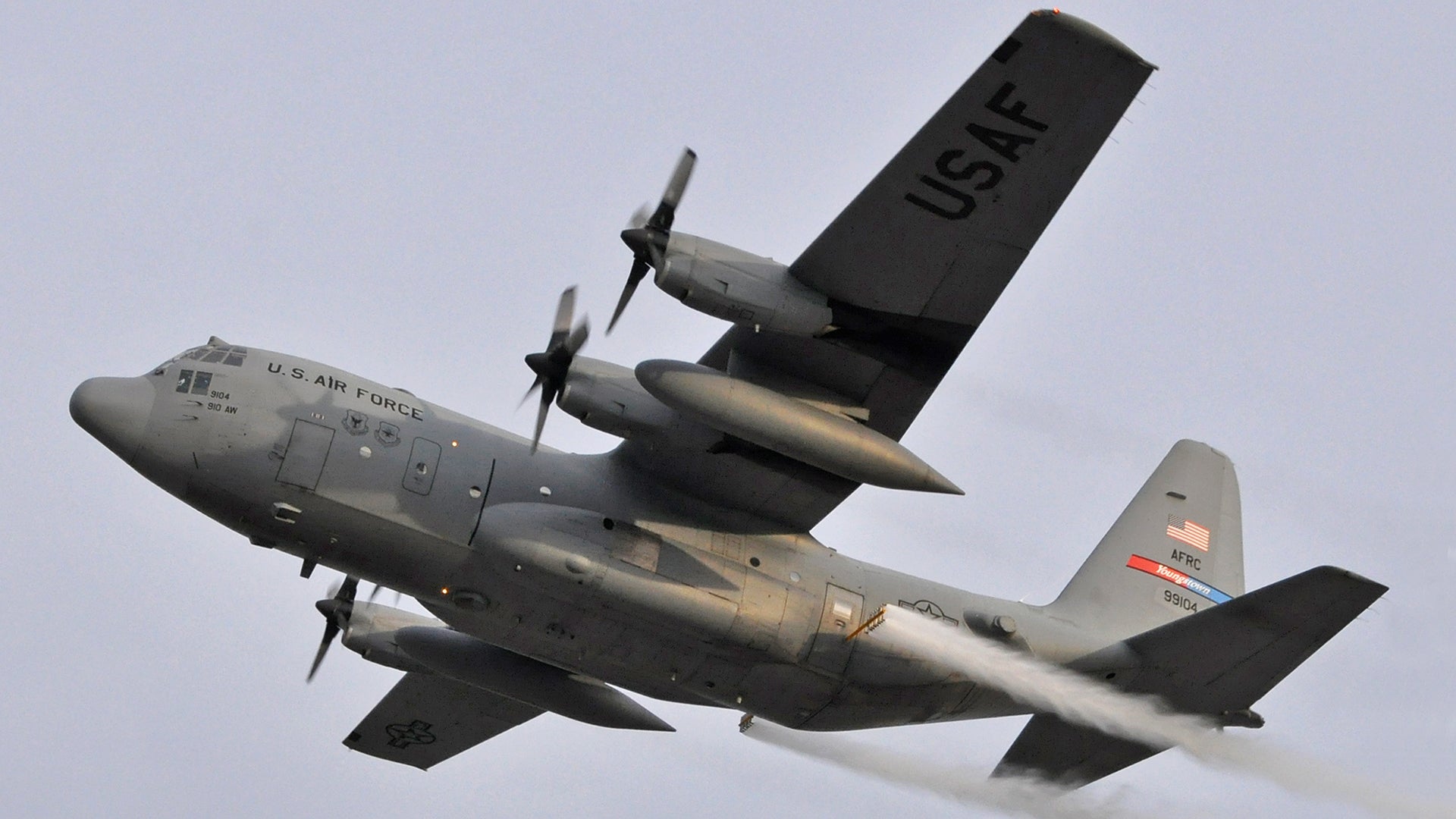C-130Hs from the Air Force Reserve’s 910th Airlift Wing are headed to Texas in response to Hurricane Harvey. The unit has a special aerial spraying capability that is going to be put to use to help with minimizing the impact of the brutal storm’s aftermath. The aircraft and their crews are based out of Youngstown, Ohio and they are the only aerial spraying capable unit in the Air Force—a function few probably even realize the Pentagon has in its portfolio.
The ability to spray large swathes of land or water with various chemicals can be used for multiple applications, including dispersing oil spills, destroying invasive vegetation, and controlling insect populations. The whole “chemtrail” crowd will probably be very concerned with the news that these aircraft will be heading to Texas, but their mission there is crystal clear.

Because there is so much standing and heavily polluted water around Houston and other areas affected by the storm, insects populations are bound to explode, which poses a major health risk to the population of southeastern Texas and the first responders working to get the area back on its feet. Mosquitoes that can carry and transmit malaria, west nile virus, zika, and multiple types of encephalitis will be the target of the operation. Supposedly the C-130s will treat over six million acres of land while dispatched to the region, far more territory than in previous post-hurricane operations.
Four C-130Hs and 70 airmen should be arriving at Lackland AFB today and will immediately begin spraying operations. With recent night vision goggle training, Herkybird crews can safely spray at low-level around the clock, and considering that nighttime is when mosquitoes are most active, spraying at after the sun goes down makes the most sense.

Each C-130H equipped with a Modular Aerial Spray System (MASS) can spray a whopping 190,000 acres per day, although that is a maximum number and normal operations will likely be a little less aggressive.
According to the USAF:
“The 910th’s customized Modular Aerial Spray System is capable of a wide-variety of applications. For mosquito control, the system uses the Environmental Protection Agency (EPA) approved and regulated material naled, which is not used in amounts large enough to cause any concern for human health, according to the EPA. The system disperses droplets small enough to land on a mosquito’s wing, using less than one ounce of naled per acre. That’s less than one shot glass for an area the size of a football field.”

MASS is an entirely different system than the C-130’s Modular Aerial Fire Fighting System (MAFS). Instead of blasting out short strings of slurry or water on fires, MASS atomizes the chemical compounds it is spraying and can cover a massive amount of territory with its two modular chemical tanks held in the C-130’s cargo bay.
The 910th Air Mobility Wing has eight C-130H aircraft and one in reserve, and as of 2014 they have six MASS units. With Hurricane Irma about to plow into what looks like all of Florida, their spraying capabilities will likely be needed there as well in the near future. Florida is already notorious for its mosquitoes, but once Irma dumps millions of gallons of water onto the state, rapid infestation is almost a certainty.



If anything else, this mission is yet another reminder of the ever increasing and downright bewildering list of missions the C-130 Hercules can be adapted to accomplish.
So if you live in Texas, don’t be alarmed if you see and hear a big C-130 roaring by at very low level while dumping something into the air behind it. It’s just the Air Force waging war on a microscopic level against an insect enemy.
Contact the author: Tyler@thedrive.com
